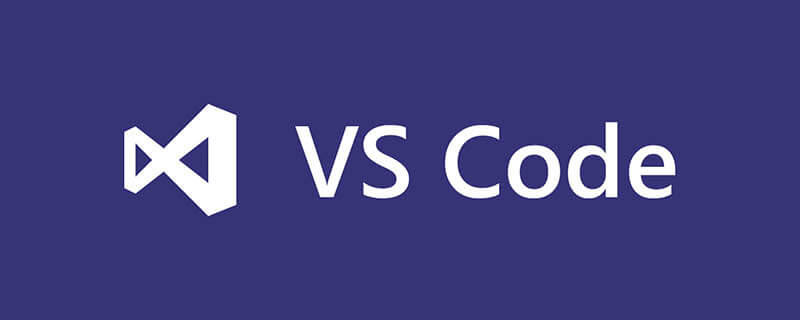NULL represents a null pointer in C language, which means that the pointer variable does not point to valid data. It is often used for function return value, pointer initialization, linked list/tree structure end flag, sentinel value and dynamic memory allocation check. When using NULL, you should pay attention to checking NULL, initializing pointers, and avoiding memory leaks and dangling pointers. Proficient in using NULL is crucial and can improve program performance and stability.

Application scenarios of NULL in C language: In-depth analysis and practice
You may think that NULL is just a simple null pointer, but the role it plays in C is much more complex and important than you think. This article will explore the application scenarios of NULL in depth and share some of the experiences and lessons I have accumulated in my years of programming career to help you avoid some common pitfalls.
First, we have to be clear: NULL is essentially a macro, usually defined as (void *)0 . It represents a pointer to an empty address, meaning it does not point to any valid memory location. Understanding this is crucial because it directly relates to how we use NULL safely and effectively.
Basics: Pointers and null pointers
In C, pointers are references to memory addresses. A pointer to a valid memory location can be used to access and modify data at that location. NULL pointers are different, pointing to an invalid memory address. Trying to access the memory pointed to by the NULL pointer will cause program crashes or unpredictable behavior, which is why we must handle NULL pointers with caution.
Core concept: Use of NULL
The main function of NULL is to indicate that the pointer variable does not point to any valid data. This is very useful in many scenarios:
- Function return value: Many functions return
NULLwhen they fail or cannot find the target, such as file opening failure, memory allocation failure, element search failure, etc. This provides an error handling mechanism for the code that calls the function, preventing the program from crashing due to accessing invalid memory. For example:
<code class="c">FILE *fp = fopen("myfile.txt", "r"); if (fp == NULL) { fprintf(stderr, "Error opening file!\n"); return 1; // Indicate an error } // ... process the file ... fclose(fp);</code>
This code gracefully handles the failure of file opening. If the fopen function fails, it returns NULL and the code prints the error message and exits. This is much safer than trying to access a potentially invalid pointer directly.
- Initialize pointer: When declaring a pointer variable, it is best to initialize it to
NULL, which prevents it from accidentally pointing to some undefined memory location. Uninitialized pointers may contain garbage values, and accessing these garbage values can lead to unpredictable consequences.
<code class="c">int *ptr = NULL; // Good practice: initialize to NULL</code>
- Linked list and tree structure: In linked list or tree structure,
NULLis often used to represent the end of a linked list or tree. This makes it very convenient and safe to traverse linked lists or tree structures. - sentinel value: In some algorithms,
NULLcan act as a sentinel value, marking the boundaries of arrays or other data structures, simplifying the algorithm logic.
Advanced applications: NULL and dynamic memory allocation
Dynamic memory allocation functions malloc , calloc , and realloc will return NULL if they fail. Be sure to check the return values of these functions to ensure the memory allocation is successful. Ignoring this check is one of the main causes of memory leaks and program crashes.
<code class="c">int *arr = (int *)malloc(10 * sizeof(int)); if (arr == NULL) { fprintf(stderr, "Memory allocation failed!\n"); exit(1); // Exit with an error code } // ... use the allocated memory ... free(arr); // Remember to free the allocated memory</code>
Common Errors and Debugging Tips
- Forgot to check
NULL: This is one of the most common mistakes. Always check whether the pointer returned from the function isNULLand perform error handling if necessary. - Use uninitialized pointers: Uninitialized pointers may point anywhere, which can lead to unpredictable behavior. Always initialize the pointer to
NULL. - Memory Leak: Forgot to free dynamically allocated memory can lead to memory leaks. Use the
freefunction to free up memory that is no longer needed. - Hanging pointer: Hanging pointer points to memory that has been released. Accessing a dangling pointer will cause the program to crash. The key to avoiding hanging pointers is to carefully manage memory allocation and release.
Performance optimization and best practices
NULL itself will not have a significant impact on performance. However, incorrect NULL checks can reduce the efficiency of the program and even cause the program to crash. Therefore, writing clear and concise code and handling NULL pointers carefully is crucial to the performance and stability of your program.
In short, NULL , although seemingly simple, plays a key role in C programming. Proficient in using NULL and developing good programming habits is the key to writing high-quality C programs. Remember, preventing things before they happen is always much better than repairing the dead.
The above is the detailed content of What are the application scenarios of NULL in C language. For more information, please follow other related articles on the PHP Chinese website!
 (超详细)VScode中配置C语言环境的方法Dec 05, 2022 pm 07:05 PM
(超详细)VScode中配置C语言环境的方法Dec 05, 2022 pm 07:05 PMVScode中怎么配置C语言环境?下面本篇文章给大家介绍一下VScode配置C语言环境的方法(超详细),希望对大家有所帮助!
 c语言中node是什么意思Jul 06, 2022 pm 03:51 PM
c语言中node是什么意思Jul 06, 2022 pm 03:51 PM在C语言中,node是用于定义链表结点的名称,通常在数据结构中用作结点的类型名,语法为“struct Node{...};”;结构和类在定义出名称以后,直接用该名称就可以定义对象,C语言中还存在“Node * a”和“Node* &a”。
 c语言怎么将数字转换成字符串Jan 04, 2023 pm 03:20 PM
c语言怎么将数字转换成字符串Jan 04, 2023 pm 03:20 PMc语言将数字转换成字符串的方法:1、ascii码操作,在原数字的基础上加“0x30”,语法“数字+0x30”,会存储数字对应的字符ascii码;2、使用itoa(),可以把整型数转换成字符串,语法“itoa(number1,string,数字);”;3、使用sprintf(),可以能够根据指定的需求,格式化内容,存储至指针指向的字符串。
 c语言开根号运算符是什么Mar 06, 2023 pm 02:39 PM
c语言开根号运算符是什么Mar 06, 2023 pm 02:39 PM在c语言中,没有开根号运算符,开根号使用的是内置函数“sqrt()”,使用语法“sqrt(数值x)”;例如“sqrt(4)”,就是对4进行平方根运算,结果为2。sqrt()是c语言内置的开根号运算函数,其运算结果是函数变量的算术平方根;该函数既不能运算负数值,也不能输出虚数结果。
 c语言数组如何初始化Jan 04, 2023 pm 03:36 PM
c语言数组如何初始化Jan 04, 2023 pm 03:36 PMC语言数组初始化的三种方式:1、在定义时直接赋值,语法“数据类型 arrayName[index] = {值};”;2、利用for循环初始化,语法“for (int i=0;i<3;i++) {arr[i] = i;}”;3、使用memset()函数初始化,语法“memset(arr, 0, sizeof(int) * 3)”。
 c语言合法标识符的要求是什么Aug 27, 2020 pm 01:47 PM
c语言合法标识符的要求是什么Aug 27, 2020 pm 01:47 PMc语言合法标识符的要求是:1、标识符只能由字母(A~Z, a~z)、数字(0~9)和下划线(_)组成;2、第一个字符必须是字母或下划线,不能是数字;3、标识符中的大小写字母是有区别的,代表不同含义;4、标识符不能是关键字。
 c语言中源文件编译后生成什么文件Nov 23, 2022 pm 07:44 PM
c语言中源文件编译后生成什么文件Nov 23, 2022 pm 07:44 PMc语言编译后生成“.OBJ”的二进制文件(目标文件)。在C语言中,源程序(.c文件)经过编译程序编译之后,会生成一个后缀为“.OBJ”的二进制文件(称为目标文件);最后还要由称为“连接程序”(Link)的软件,把此“.OBJ”文件与c语言提供的各种库函数连接在一起,生成一个后缀“.EXE”的可执行文件。
 c语言中*p和p的区别是什么Nov 29, 2022 pm 06:03 PM
c语言中*p和p的区别是什么Nov 29, 2022 pm 06:03 PM区别:1、表示的含义不同,“*p”表示此指针指向的内存地址中存放的内容,“p”表示一个指针变量的名字,指此指针变量所指向的内存地址。2、输出的格式不同,“*p”输出的一般是一个和指针类型一致的变量或者常量,“p”输出的是一个16进制数, 输出一个指针的地址。3、功能不同,“*p”是让程序去那个地址取出数据,“p”用于存放的是地址。


Hot AI Tools

Undresser.AI Undress
AI-powered app for creating realistic nude photos

AI Clothes Remover
Online AI tool for removing clothes from photos.

Undress AI Tool
Undress images for free

Clothoff.io
AI clothes remover

AI Hentai Generator
Generate AI Hentai for free.

Hot Article

Hot Tools

WebStorm Mac version
Useful JavaScript development tools

DVWA
Damn Vulnerable Web App (DVWA) is a PHP/MySQL web application that is very vulnerable. Its main goals are to be an aid for security professionals to test their skills and tools in a legal environment, to help web developers better understand the process of securing web applications, and to help teachers/students teach/learn in a classroom environment Web application security. The goal of DVWA is to practice some of the most common web vulnerabilities through a simple and straightforward interface, with varying degrees of difficulty. Please note that this software

Zend Studio 13.0.1
Powerful PHP integrated development environment

Dreamweaver Mac version
Visual web development tools

Notepad++7.3.1
Easy-to-use and free code editor







